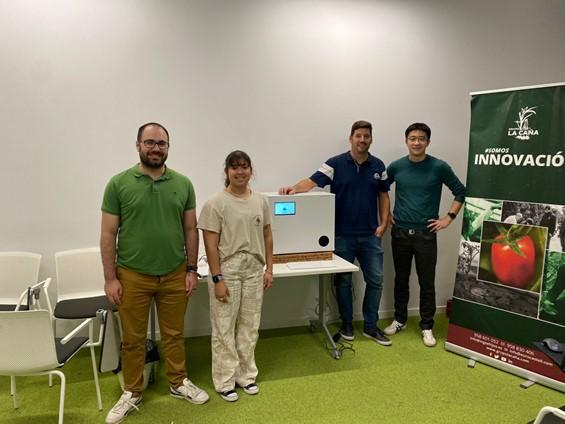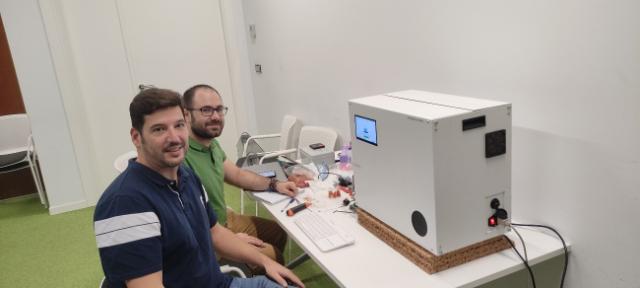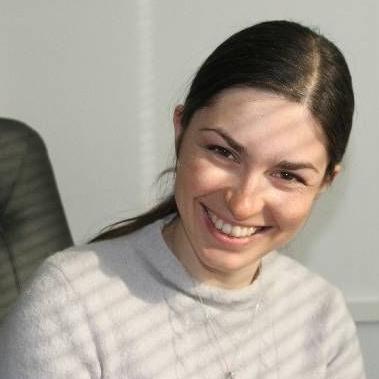Living Lab #5 - Ugly Food Identification
Imperfect food and technology: the key to avoiding food waste
Did you know that each inhabitant of the European Union generates 127 kilograms of food waste per year?
In the ZeroW project, we are committed to reducing food waste through 9 different systemic innovation Living Labs (SILLs). These are innovative experimental environments which address the various obstacles that arise during the supply chain and increase these losses.
Focusing on imperfect food, i.e. food that is discarded because of its 'non-aesthetic' appearance, the Living Lab 5 uses machine vision technology to give it a second life. Learn more about how in this article.

Photo: Living Lab #5 - Ugly Food Identification is working with machine vision technology to give otherwise discarded food a second chance to end up on consumers' dinner plates.
What is 'ugly food'?
Ugly food is food that does not meet ideal standards of beauty. A different shape, colour or size can lead to rejection by the retailer or consumer, resulting in the waste of fruit and vegetables that retain their qualities and are fit for consumption.
It is estimated that one third of the European Union's agricultural production is discarded for aesthetic reasons.
Behind this figure lies a huge waste of food and resources that could be reused. But how can the European ZeroW project help to solve this problem? To halve Food Loss & Waste (FLW) by 2030 and reach near-zero FLW by 2050, ZeroW living lab 5 (SILL5) will use machine vision technology in Andalusia, Spain.
Identifying ugly food
Led by Corporación Tecnológica de Andalucía (CTA), Living Lab #5 also involves the Andalusian Institute of Agricultural and Fisheries Research and Training (IFAPA), a public entity, and the companies Grupo La Caña and Multiscan Technologies.
The aim of this living lab is to implement technologies based mainly on VIS-NIR (Near-infrared spectroscopy) technology to help reduce the waste of imperfect food by producers and retailers. The need to address this obstacle in the food supply chain arises from several negative factors identified by the ZeroW project when growing vegetables for retail sale.
Some of these factors are the late identification of imperfect foods, the lack of information on the shelf-life of these foods and their alternative opportunities, or the lengthy duration of certification analyses of organic samples, which can lead to problems in subsequent labelling and confusion among consumers.
ZeroW's Living Lab #5 is implementing a testing platform and trials in Grupo La Caña's facilities.
There, Multiscan Technologies is providing the necessary technology and CTA and IFAPA will be disseminate and extend the demonstration activities of this activity to the regional level.
"It is estimated that one third of the European Union's agricultural production is discarded for aesthetic reasons."
How does Living Lab 5 work?
As we have explained, the aim of ZeroW's living labs is to generate innovative tools and processes to reduce food waste throughout the food supply chain.
The multi-sensor platform of Living Lab #5 would have the capacity to analyse and process the state of around 300,000 fruits per hour. This is made possible by machine vision and a real-time data processing system which is also intended to be improved so that the data software module to monitor incoming products is more effective.
The process is as follows: tomatoes that are at an early stage enter the platform and are classified by quality and usefulness/shelf life applying non-destructive and multi-attribute analysis techniques. It allows the tomatoes to be classified into three groups.
In this way, the platform would be able to identify product defects early and estimate their shelf life in optimal conditions.
In addition to this innovative technology, Living Lab #5 is doing some trial with a portable mass spectrometer, i.e., a device that analyses the chemical compounds in tomatoes and identifies organic samples from non-organic ones.
NGSsensor is the company whose technicians went to Grupo La Caña's facilities to train in the use of the prototype sensor capable of detecting volatiles emitted by tomato samples, which will allow to avoid food waste due to incorrect identification of tomato batches.
Below, there is a picture of this process during the starting trials:

Technology can also be used to detect imperfections in other fruis and vegetables
During the ZeroW project it is hoped that the use of the technology generated by CTA, IFAPA, Grupo La Caña and Multiscan Technologies can be extended to the detection of imperfections in other fruits and vegetables.
Apart from all the technical solutions and approaches explained above, all SILLs in ZeroW use an innovative tool called Systemic Innovation Readiness Level (SIRL) to promote the way for commercialization and scaling up.
SIRL allows to address relevant innovation dimensions promoting a transformative change, as well as monitoring the systemic innovation process in the SILLs, identifying bottleneck innovations and assessing the potential impact of the ZeroW FLW solutions.
You can imagine the positive environmental, economic and social impact of distributors and retailers in real-life food chains being able to take advantage of non-aesthetic food and make it useful. With the use of the technology implemented in Living Lab 5, and in connection with the rest of ZeroW's living labs, we could generate new and more sustainable environments.
If you want to know more about this activity of the ZeroW project, please do not hesitate to visit our social networks and recommend our newsletter to other contacts below.









